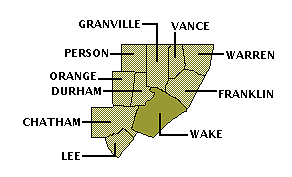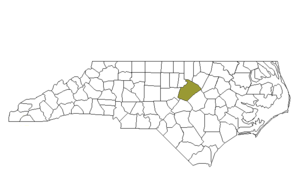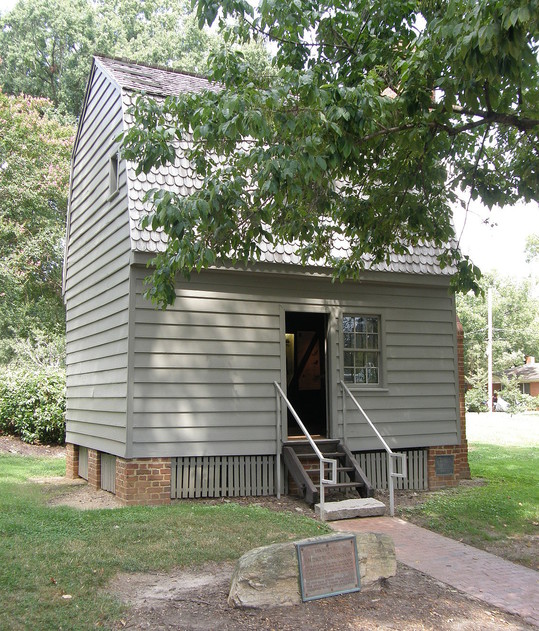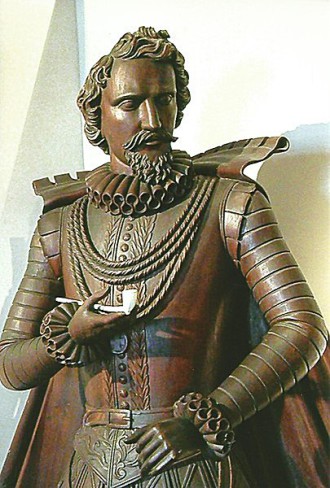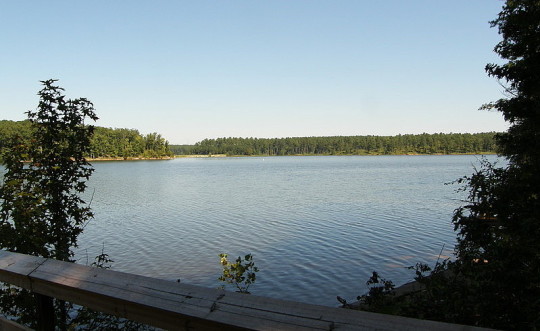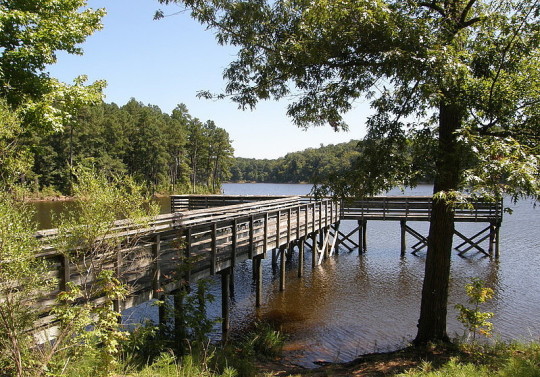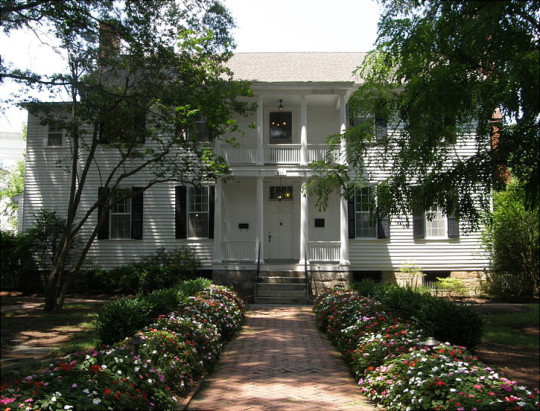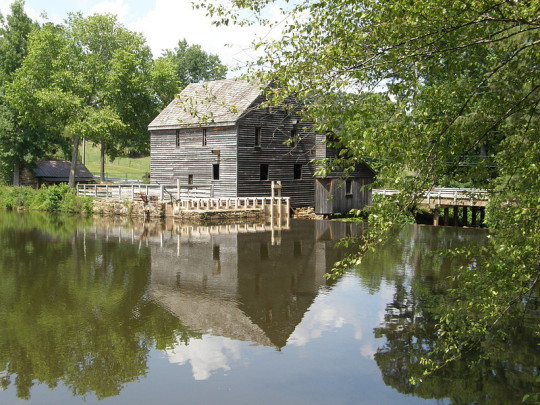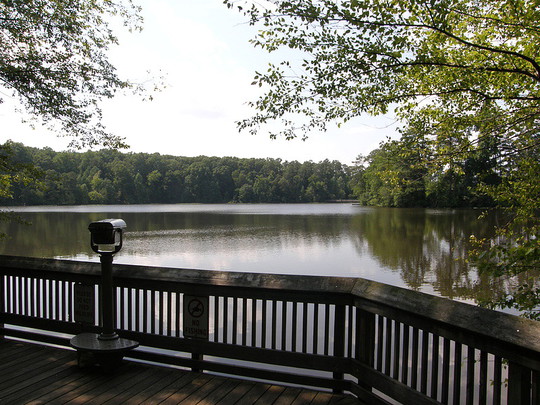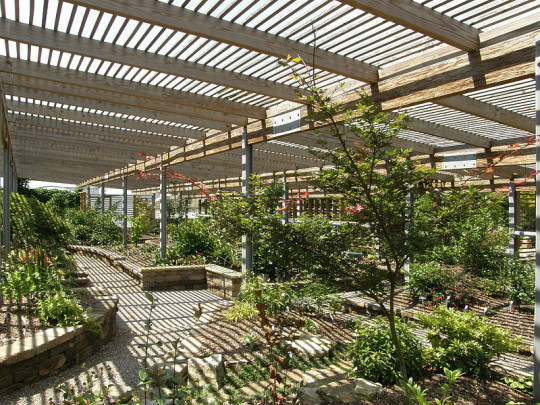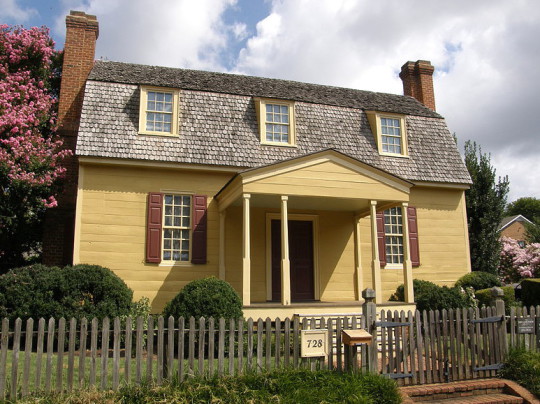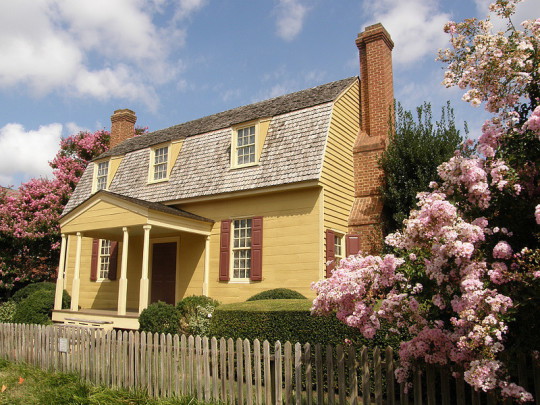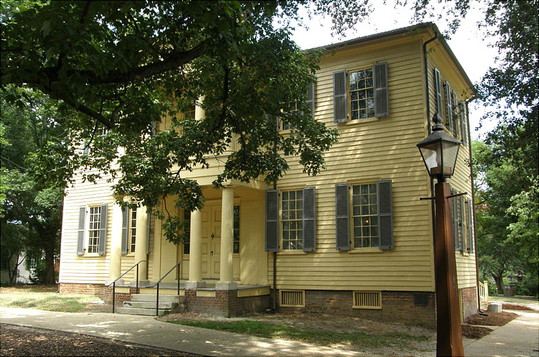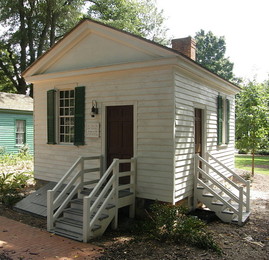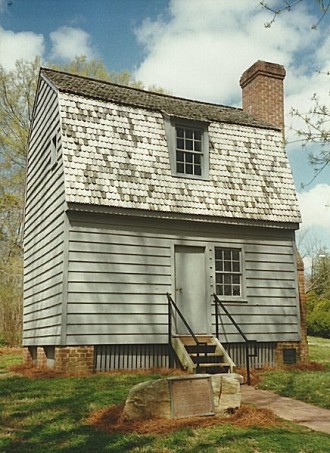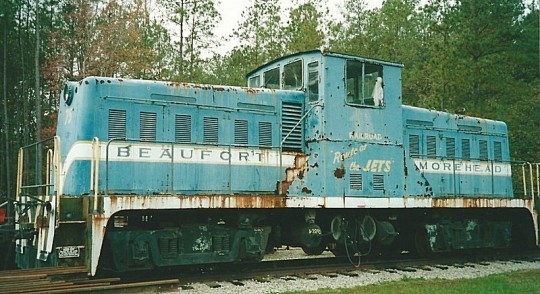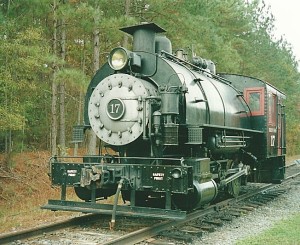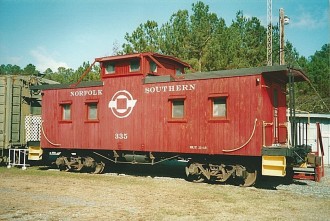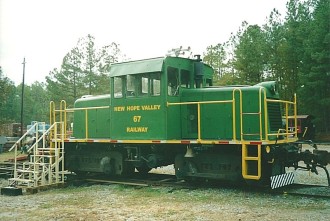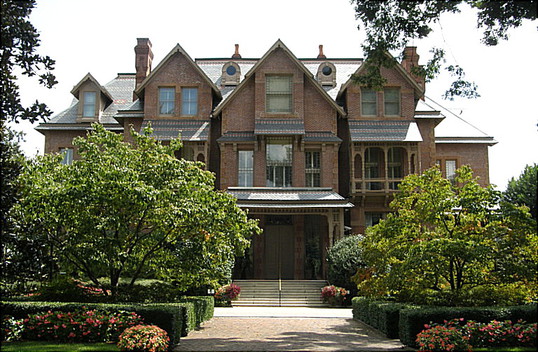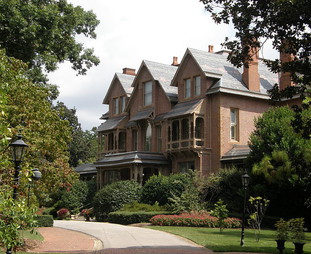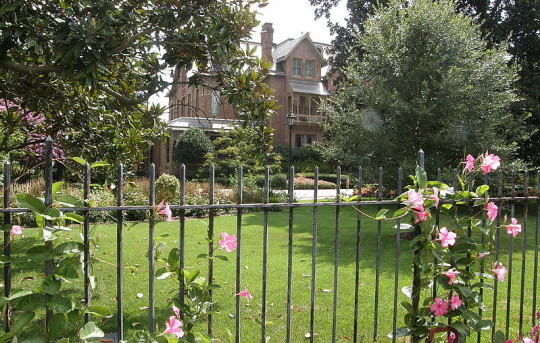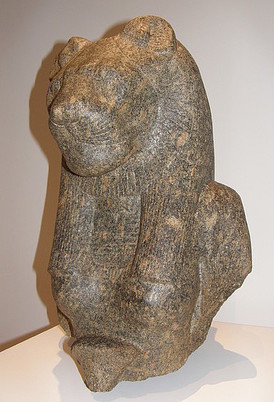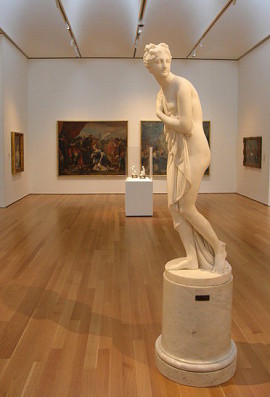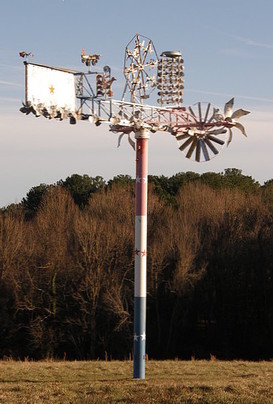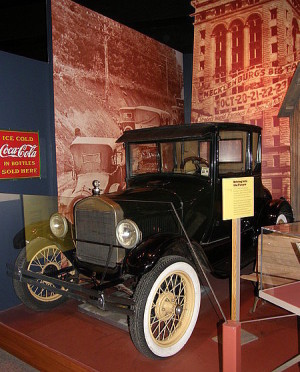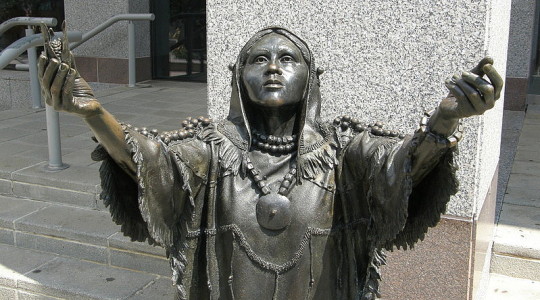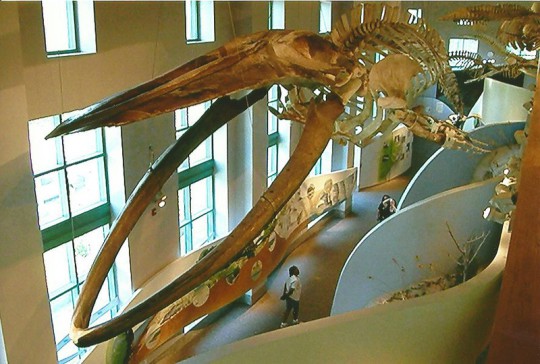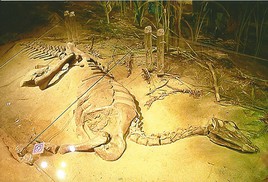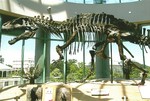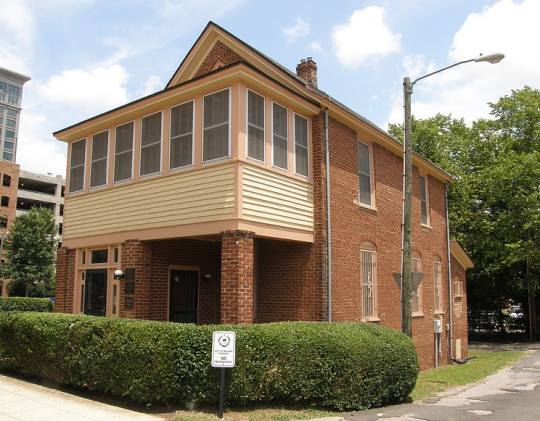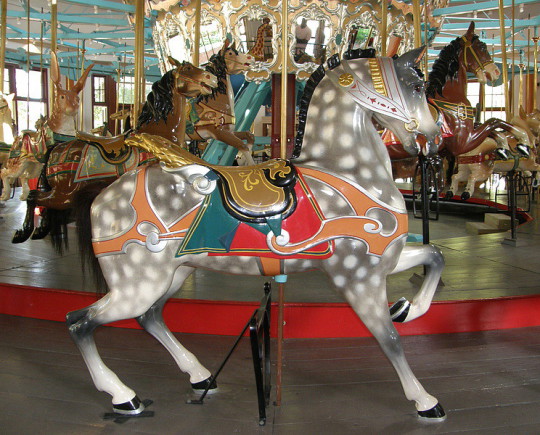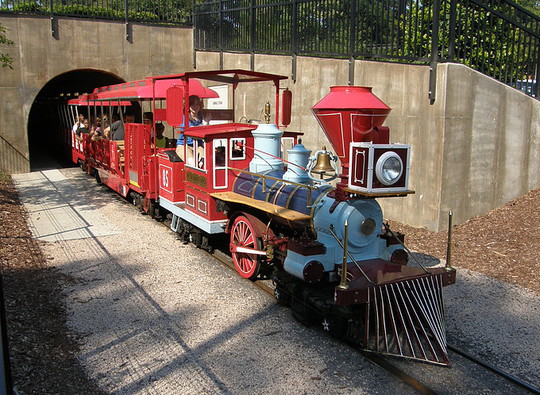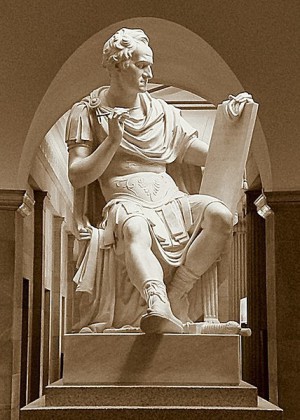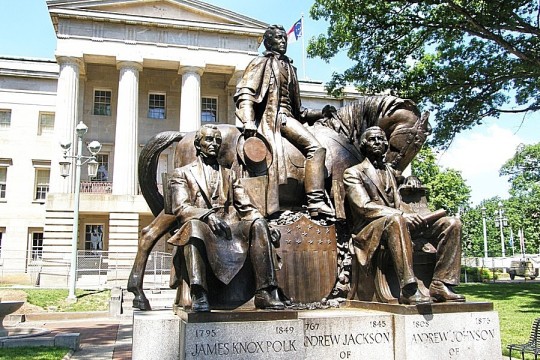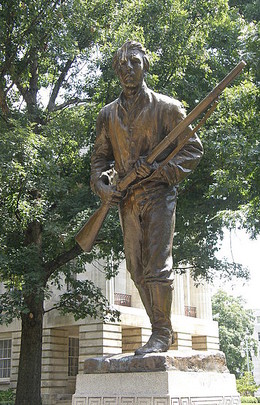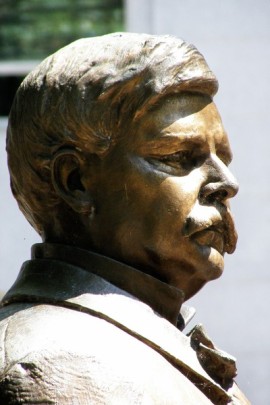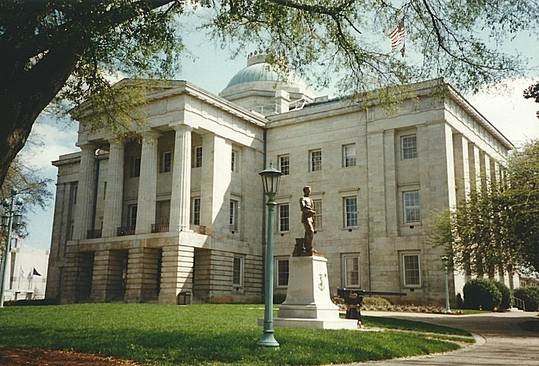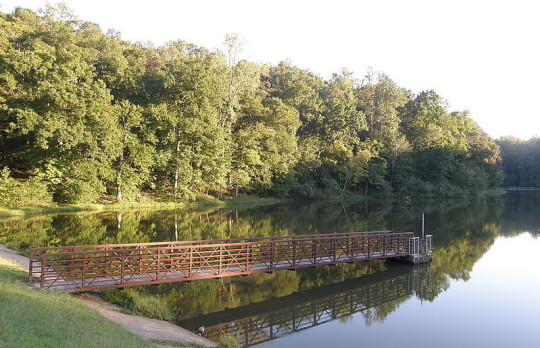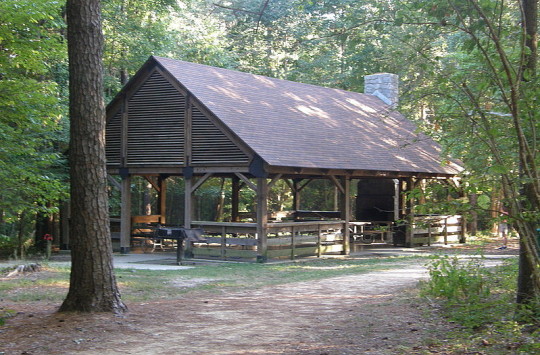WAKE COUNTY
Scroll down this page or click on specific site name to view features on the following Wake County attractions/points of interest:
City of Raleigh Museum, Falls Lake State Recreation Area, Haywood Hall, Historic Yates Mill County Park, J. C. Raulston Arboretum, Joel Lane House, Mordecai Historical Park, New Hope Valley Railway, North Carolina Executive Mansion, North Carolina Museum of Art, North Carolina Museum of History, North Carolina Museum of Natural Science, Pope House Museum, Pullen Park, State Capitol and Grounds, William B. Umstead State Park
Fast facts about Wake County:
Created in 1771, the county is named for Margaret Wake, wife of Royal Governor William Tryon.
The county seat is Raleigh, named for Sir Walter Raleigh, who championed England’s first effort to establish a colony in the New World. Other communities include Apex, Cary, Fuquay-Varina, Garner, Holly Springs, Knightdale, Wake Forest, and Zebulon.
Wake County’s land area is 831.92 square miles; the population in the 2010 census was 900,993.
It is worth noting that Raleigh, being the state capital, is the location of the North Carolina Museum of Art, the North Carolina Museum of History, and the North Carolina Museum of Natural Science. North Carolina State University is also located in Raleigh.
Below: The Andrew Johnson Birthplace at Mordecai Historical Park in Raleigh
Raleigh
A renovated hardware store paints a bright picture of the history of North Carolina’s capi-tol city and provides an excellent introduction to “The City of Oaks.” The City of Raleigh Mus-eum occupies the old Thomas Briggs hardware store, a three-story brick building in the center of the 200 block of Fayetteville Street – once regarded as North Carolina’s “Main Street.” Com-pleted in 1874, the Briggs building was the city’s first “skyscraper.” It has been said that a picture is worth a thousand words – the museum relies heavily on both to tell the history of the state’s capitol city. In need of a permanent location for the state government, the 1792 general assembly deter-mined to create a new city near the center of the state, to be located within ten miles of Isaac Hunter’s popular tavern, situated along the main north-south road through Wake County. The city was named Raleigh in honor of Sir Walter Raleigh, whose early, if ill-fated, efforts at colonization earned him the title “Father of English America.” The museum displays a large number of vintage photographs, showing many 19th and 20th century city landmarks that, sadly, no longer survive, including the Eagle Hotel (1812), the city’s premier hostelry until the Civil War; the Governor’s Palace (1816), located on the site of today’s Memorial Auditorium; the Yarborough House (1850), a hotel used as residence for several governors after the Civil War until a new executive mansion was completed; and the castle-like Baptist Female Academy (1899). Among the more impressive artifacts on display is a Spanish cannon, captured by the U.S.S. Raleigh during the battle of Manila Bay in 1898, and the official city flag, designed in 1899 but lost for nearly 70 years! The Raleigh City Museum is located at 220 Fayetteville Street, due south of the capitol building. Hours are 10-4 Tuesday-Friday and 1-4 Saturday and Sunday. Admission is free; donations are accepted. 919-832-3775
Wake Forest
Between 1978 and 1981, a dam was constructed across the Neuse River a few miles northeast of Raleigh. The dam helped prevent destructive flooding down river, and created the 38,000-acre Falls Lake reservoir. Maintained by the North Carolina Division of Parks and Recreation, Falls Lake State Recreation Area includes seven distinct areas: Beaverdam, B. W. Wells, Highway 50, Holly Point, Rolling View, Sandling Beach, and Shinleaf. Falls Lake has more than 300 campsites, each with a picnic table, fire pit, and tent pad. Many have electric hookups. Restrooms, hot showers, playgrounds, and dump stations are near each campground area.
Activities at the recreation areas at Falls Lake are naturally centered on the water. Beaverdam, Rolling View, and Sandling Beach have sandy beach areas with nearby changing rooms and restrooms. Personal flotation devices are available for loan at all three areas. Boat-launching ramps are located at Beaverdam, Highway 50, and Rolling View recreation areas and for registered campers only at Holly Point. Beaverdam features 15 miles of mountain bike trails. Short nature trails are found at Beaverdam, Rolling View, and Sandling Beach, while a portion of the Mountains-to-Sea Trail can be accessed at Rolling View or the Falls Lake Park Office. Fishing is another popular Falls Lake pastime, with common catches including catfish, crappy, bass, and bluegill.
Raleigh
Haywood Hall, standing two blocks east of the state capital building, was the home of North Carolina’s first elected state treasurer, a position John Haywood held for forty years! Built circa 1800, it is the oldest house in the city still standing on its original foundations. The Haywood mansion is representative of the Federal style, a two-story white frame house accented with a double portico. Set back a short distance from the street, the house is nestled among towering shade trees; the fine gardens which grace the property are the legacy of Eliza Haywood, John’s second wife. She was seventeen when she married Haywood, who was forty-three. Together, they had twelve children. Many Haywood family heirlooms are on display in the house, and family portraits abound. Haywood Hall is operated by the National Society of Colonial Dames and is open for guided tours 11-3 the second and fourth Thursday of each month. Admission is free; donations are accepted. 919-832-8357
Raleigh
Yates Mill is the sole survivor of more than 70 such mills that once operated in Wake County. Mills of this type were hugely important to the areas they served for social as well as economic reasons. They were often the “backbone” of growing communities, serving as centers for community gatherings. The first mill on this site, located on the fall line where the Carolina piedmont meets the coastal plain, was built circa 1756; what visitors see today is mostly a 19th century structure. The mill pond covers about 25 acres and provides a stored source of power. As water is released through the headgate, it flows through the flume and fills the water buckets attached to the overshot wheel. The wheel is 12 feet in diameter and 4 feet wide, and as the buckets fill, gravity pulls the wheel down, creating the power to turn the milling stones; the waterwheel generates from 7 to 12 horsepower. The Yates mill is an intact, working example of the 3rd Federal patent automatic milling process issued in 1790. French burr stones are preferred for grinding wheat, harvested in spring; granite stones are preferred for milling corn, harvested in the fall. Half-hour guided tours of the mill are offered 1-3 on Saturdays from March through November. One-hour mill heritage and local history tours are given at 2 PM on Sunday. Fee charged. 919-856-667
Raleigh
The Raulston Arboretum is located on the campus of North Carolina State University. Covering 10 acres, it is primarily a research and teaching garden, but the general public will certainly find it an enjoyable place to spend time. The site features many themed gardens displaying myriad flowers, shrubs, and trees. The arboretum is open daily year-round; hours are 8-8 April through October and 8-5 November through March. Admission is free. 919-515-3132
Raleigh
The Joel Lane House is the oldest surviving structure in Raleigh and Wake County, moved to its location at 728 West Hargett Street in 1911. The house is important not only because of its age, but because of its owner. Joel Lane was an important political and military figure. In 1770, as a member of the North Carolina colonial assembly, he introduced the bill that created Wake County. He achieved the rank of Lieutenant Colonel in the Wake militia during the Revolutionary War, held several public offices in Wake County over the years, was a delegate to the 1789 Constitutional Convention in Fayetteville, and served as a trustee for the University of North Carolina.
Lane also deeded to the state the land upon which the city of Raleigh would be laid out. The two-story, yellow frame house, built in 1769, contains much of its original interior woodwork and flooring. The site also includes a middle class home, a city garden, a grape arbor, and an herb garden. Owned by the National Society of Colonial Dames, the Lane House is open 10:00-2:00 Wednesday through Friday from March through mid-December, and 1:00-4:00 on Saturdays. Costumed guides give tours of the house, middle class home, and gardens. Admission charged. 919-833-3431
Raleigh
Mordecai Historic Park, located only a few blocks away from downtown Raleigh off Wake Forest Road, showcases the birthplace of US President Andrew Johnson, the Badger-Iredell law office, and one of Wake County’s finest plantation homes. It’s hard to say which is the bigger attraction – the rambling antebellum plantation house filled with original family furnishings, or the modest, two-story frame house that was the birthplace of our nation’s 17th president. Fortunately, visitors to Mordecai Historic Park won't have to choose. They get to see both, and several other buildings of historic interest as well! Admission tickets are purchased in the gift shop located in the plantation house, and this is where guided tours begin.
The original part of the plantation home was built in 1785 by Joel Lane for his son and daughter-in-law, Henry and Polly Hinton Lane. The home became known as the Mordecai house following the marriage of the Lanes’ daughter, Margaret, to Moses Mordecai. A Greek Revival addition was added in 1826. The plantation flourished, eventually encompassing several thousand acres. Such well-known Raleigh neighborhoods as Historic Oakwood were built on land once part of the plantation. A family home for five generations, the house today displays many family heirlooms. Two original dependencies, a storehouse and a small overseer's office, are featured on the tour. In addition, a kitchen, circa 1840, has been relocated to the site from Anson County, and stands on the probable site of the plantation’s original kitchen.
Other buildings of note have also been moved to the park, including the circa 1810 law office of George Badger and James Iredell, Jr. Badger was appointed Secretary of the Navy by President William Henry Harrison, and also served North Carolina as a US Senator. The son of James Iredell, Sr., North Carolina’s famed Supreme Court Justice, Iredell, Jr. served North Carolina as superior court judge, state governor, and US senator. St. Mark’s Chapel, constructed during the 1840s by slaves on a Chatham County plantation, has been moved to the park; the small chapel is often used today to host weddings. Yet another mid-19th century building on the property is a narrow wood-frame structure that was probably used as a post office or other public office building.
In terms of national interest, the park’s most important building is the restored birthplace of Andrew Johnson. The small house originally stood behind Casso’s Inn on Fayetteville Street and served as a kitchen and residence. Johnson’s father worked as a livery man for the inn and his family was allowed to stay in the small cottage. Andrew was born in the upstairs bedroom December 29, 1808. At age 14, Andrew was apprenticed to a tailor in Raleigh. At age 15, in fear of punishment for a childish prank, Johnson ran away. Finding his way to Greenville, Tennessee, Johnson established himself as a tailor and gradually became involved in politics. A US senator at the outbreak of the Civil War, Johnson remained loyal to the Union. Lincoln appointed him military governor of Tennessee in 1862 and chose as him as running mate in 1864. Upon Lincoln’s assassination, Johnson became the nation’s 17th president. Johnson’s birthplace was acquired by the Colonial Dames in 1904 and was later presented to the city of Raleigh. Mordecai Historic Park is open 10-3 Monday, Wednesday-Saturday, 1-3 Sunday. Closed Tuesdays. One-hour guided tours begin every half hour. Admission charged. A small gift shop offers North Carolina folk art, books of regional interest, and local hand-crafted items. One Mimosa Street. 919-834-4844
Bonsal
The North Carolina Railroad Museum and New Hope Valley Railway is the place to go if you’re interested in old time rail cars and engines and their restoration, or if you enjoy the novelty of riding the rails on a short stretch of historic track, or both. It is only due to a fortuitous set of circumstances that the New Hope Valley Railway still exists. In 1904, William Roscoe Bonsal, vice president of Seaboard Airline Railway, decided that the sweet gum trees growing in the vicinity of the New Hope River would be an excellent source of wood for railroad ties. Seaboard built what was originally intended to be a temporary railroad to facilitate removing the timber. In time, however, after ownership passed first to Norfolk Southern and then to Southern Railway, the route was actually extended. Tracks ran from Durham to Duncan, providing an important means by which farming communities in Wake, Chatham, and Durham counties could transport tobacco leaf to processing facilities in Durham. The railway’s importance declined in the 1940s as trucking became the preferred means of transportation. Southern Railway still owned the lines in 1971 when construction of Jordan Lake required that the tracks be relocated a few miles eastward. The line was no longer of much use to Southern, however, and in 1982 the East Carolina Chapter of the National Railway Historical Society purchased a 6-1/2 mile length of track in western Wake County.
There’s nothing fancy about the New Hope Valley Railway. Although plans are underway to build a shops building to help protect a few of the restored engines and cars, at present the amenities are somewhat sparse. Instead, the NHVR looks like what it is – a place where aged rail cars and engines are undergoing the slow and tedious process of restoration. The site receives no outside funding and operates totally upon contributions and revenue generated from the Railway’s popular train rides. More than 100 chapter volunteers, many of whom have been associated with NHVR for 15 years or more, devote countless hours to the restoration of engines, rail cars, and other sundry projects. A current list of work needing to be done includes replacing bridge timbers, removing rust from the exhibit car, repainting a caboose, and repairing an engine car mover. Visitors to the site won’t be given any kind of organized tour, but if volunteers are on hand, they will usually be able to answer questions and share information about some of the equipment on the property.
The Railway features an inter-esting assortment of cars and engines. The two passenger cars used for the train rides are converted flat cars originally built to haul tanks during World War II. The site’s exhibit car was built in 1942 for the U. S. Army; the boxcar originally included bunks for twelve men, a stove, and a bathroom, and was the “ultimate in no frill transportation.” A Railway Post Office (RPO) car is one of the current restoration projects. The NHVR has three General Electric locomotives, two Whitcomb diesel electric engines, and a Tank Steam engine. No railroad museum would be complete without at least one caboose, of course, and the NHVR has several, including one built for the Aberdeen and Rockfish line in 1926 that features unusual side doors. Another, built in 1913, underwent a 3-year restoration and now looks much as it did when it was new. It is the only surviving Norfolk Southern wooden caboose. In its day, the caboose served as the train “office,” and met the traveling needs of the crew. The conductor’s work desk and a water stand were in the forward compartment of the caboose. The cupola provided a perch where the conductor and brakeman could observe the entire train. The living area was at the rear, with a stove for heating and cooking, lockers for clothing, and bunks for sleeping. Modern technology has made the caboose obsolete.
The NHVR is located in Bonsal, N. C., about 8 miles southwest of Apex. Six miles south of Apex on US 1, take Exit 89 (Jordan Lake-New Hill). Turn north, go approximately 2 miles, and turn left onto Old US 1. Go 2 miles and turn left onto Bonsal Road, just before going under two railroad bridges. The Museum is staffed only on Wednesdays, Work Days, and Train Ride Days (the first Sunday of each month, May through November). The grounds are open, however, and the railroad equipment can be viewed any day of the week. Weekend train rides are scheduled at 11:00, 12:15, 1:30, 2:45, and 4:00 and cost $8.00 for adults and $6.00 for children 1-12. The rides run between the communities of Bonsal and New Hill and take about an hour roundtrip. In addition to the regular rides, special rides are given the Saturday before Halloween and both Saturday and Sunday the first two weekends in December. Group rides can also be arranged. Admission to the site itself is free; donations are accepted. A gift shop includes a small selection of railroad memorabilia. 919-362-5416
Raleigh
For nearly 130 years, North Carolina’s Executive Mansion has been home to twenty-seven state governors and their families. The home is located on Blount Street in the heart of downtown Raleigh, near the state capitol building and is open to the public for tours. Built in 1884-85, when the Queen Anne style was at its height of popularity in America, the Executive Mansion features most of the characteristics associated with that architectural design: steeply pitched roofs, pronounced gables, projecting chimneys, rich textural surfaces, and an abundance of ornamental spindle and scroll woodwork. Its size and ornamentation were intended to symbolize North Carolina’s commitment to modernization and economic growth and to capture the spirit of the “New South” as a new century approached.
The Mansion also satisfied a very pressing need. In the aftermath of the Civil War, the “Governor’s Palace,” on the site of today’s Memorial Coliseum, had fallen into such disrepair as to become uninhabitable. Governor Thomas Jarvis, who championed the construction of a suitable home for the state’s executive officer, lived in a rented hotel room for his entire term in office, as had his immediate predecessors. After much debate and delay, the state legislature finally authorized construction of the governor’s home. Whenever possible, all labor and materials necessary for the mansion’s construction were furnished by convict labor from the state penitentiary. Although the exterior was completed in 1885, financial shortages and legislative gridlock delayed completion of the interior for another six years. Governor Daniel G. Fowle was the first to occupy the home, officially taking up residence January 5, 1891. The finished cost of the mansion was $58,843.
Over the years, improvements con-tinued to be made to the home, but the first major refurbishing was not until 1925, during Angus McLean’s administration. The interior received a neoclassical makeover, with ivory paint, clear windows, and fluted Corinthian columns replacing the brown tones, stained glass, and heavy Victorian woodwork originally in place. A second facelift in 1949, during W. Kerr Scott’s term of office, included a complete modernization of the kitchen. By the late 1960s, however, the Mansion was in need of extensive rehabilitation, and many concerned individuals thought the home should be demolished or converted to use as a museum.
Instead, the Mansion was added to the National Register of Historic Places in 1970, and the decision was made to completely refurbish the home. Governor James E. Holshouser and his family lived in a Raleigh suburb for nine months while the renovations were completed. The project included new plumbing, electrical, and heating and air conditioning systems; repairs and improvements to the roof and basement; and refinishing, repainting, or repapering all the floor and wall surfaces of the 35,000-square-foot building. Today the Executive Mansion stands as originally intended, a proud symbol of the Tar Heel State. Tours are by reservation only, last about an hour, and include the first floor only. Among the public rooms visited are the Ladies’ and Gentlemen’s Parlors, Library, Ballroom, Formal Dining Room, and Morning Room. Each of these opens off the grand Entrance Hallway that extends through the center of the house. Paintings, furnishings, and personal effects seen on tour give visitors a taste of North Carolina’s flavorful history. The mansion is located on Blount Street in the heart of downtown Raleigh Tours are free, but times are necessarily restricted. Tour times vary seasonally and group sizes are limited, so it is advisable to call for current schedules and to make reservations. 919-733-3456
Raleigh
Sixty years ago, North Carolina became the first state in the nation to utilize public funds for the purpose of purchasing a collection of art. Since its inception in 1947, the NC Museum of Art has gradually defined itself as one of the premier cultural institutions in the Southeast. At present, the Museum exhibits art from around the world and dating as early as 3,000 BC in a new, 127,000-square-foot facility that opened in 2009. The site also features a park with trails, large outdoor sculptures, and an amphitheater. Selected items from the Museum’s extensive collection are displayed in themed galleries, including Ancient, European, African, Judaic, and American, among others.
The American Gallery features work from the 18th and 19th century by such notables as John Singleton Copley, James Audubon, Winslow Homer and Augustus Saint-Gaudens. Featured in the European Gallery is an eclectic mix of painting and sculpture running from the Renaissance through the Impressionism period. The collection includes items from Italy, France, Germany, Spain, the Netherlands, and England and showcases works by Botticelli, Raphael, Rubens, Monet, and other luminaries. One such piece, the Venus Italica, was fashioned by Antonio Canova, regarded as the greatest sculptor of his day. The statue was hailed as a masterpiece, and several copies were made before Canova’s death. The Museum’s version was made at the Canova workshop circa 1815-1822, most likely by one of his more skilled students and under the master’s supervision. Canova was also responsible for the figure of George Washington in Roman attire which graced the rotunda of the NC Capitol Building.
Not all of the Museum’s art is kept inside. Save some time to walk the 164-acre Museum Park, featuring several trails that wind their way through wooded fields and over rolling hills. Along the way you’ll find unique sculptures inspired by nature. Wind Machine, for example, created in 2002 by Vollis Simpson, is a kinetic whirligig atop a 35-foot red, white, and blue pole. Cloud Chamber for the Trees and Sky is actually an oversized pinhole camera – from inside the chamber, viewers will see an inverted image of the sky. Artist Al Frega, meanwhile, recycled metal bars salvaged from the Polk Youth Correctional Facility that once stood on a portion of the Museum grounds to create an assortment of decorative – and functional – bike racks, benches, and signage. By the way, for those who travel the Raleigh Beltline and have wondered about the impressive footbridge that spans I-440, it actually connects the Museum Park with the Meredith College campus. At 660 feet in length, Greenway Bridge is the longest pedestrian bridge in North Carolina!
Admission to see the Museum’s permanent is free. An audio tour, a prerecorded program that highlights many of the Museum’s most significant works, is available for a nominal fee. Admission is charged to view special traveling exhibits. Hours are 9-5 Tuesday, Wednesday, Thursday and Saturday; 9-9 Friday; and 10-5 Sunday. Closed Monday. An on-site café offers lunch from 11:30-2 Tuesday-Saturday and 10:30-2:30 Sunday and dinner Friday evenings from 5:30-10:00. 919-839-6262
Raleigh
When it comes to the North Carolina Museum of History in Raleigh, the “good news-bad news” cliché holds true. On the down side, with more than 150,000 artifacts in its collection, the Museum can’t possibly have them all on display at one time. The upside is that items showcased in the Museum’s galleries are changed fairly often, so even visitors who have toured the facility in the past will, upon a return visit, likely find new objects of interest on display. A lot should be expected of a state museum, and the NC Museum of History doesn’t disappoint. Artifacts galore, covering more than 400 years of Tar Heel triumphs and trivia, are displayed throughout the modern three-story facility. As noted above, exhibits do change frequently, so what visitors find on one trip might be appreciably different from what they see on the next. A more or less permanent fixture is the full-sized replica of the 1903 Wright Brothers’ Flyer, a tribute to the state's place in aviatin history. Formerly displayed hanging above the information desk in the lobby, now it soars above turn-of-the-20th century exhibits in the Museum's main gallery. Suspended above the central stairway is the hang glider designed by Francis Rogallo, who tested his designs – like the Wright brothers before him – on the dunes of the Outer Banks. His designs earned him the title “Father of Hang Gliding.”
To give just a hint at what visitors might see, here is a small sampling of some of the special exhibits which have been presented at the Museum over the past few years. “From the Museum’s Attic” showcased an eclectic mix of items large and small, new and old: colonial and Civil War era currency, gold coins privately minted by Christopher Bechtler of Rutherford County, a flag purportedly flown at the Battle of Guilford Courthouse in 1781, and all manner of furniture. A life-sized portrait of Otway Burns, one of America’s most successful privateers during the War of 1812 and later a state legislator, was displayed; elsewhere was found a miniature portrait of Hugh Waddell, a commander of militia during the French and Indian War and an outspoken opponent of the Stamp Act. “Knights of the Black Flag” focused on piracy in general and on such notorious figures that sailed the Carolina coast as “Callico Jack” Rackham, Stede Bonnet, Anne Bonney, and, of course, Edward Teach, aka Blackbeard. Relics from what is thought to be the wreckage of the Queen Anne’s Revenge, Blackbeard’s flagship, were an integral part of the exhibit. “Mysteries of the Lost Colony” explored the history of America’s oldest mystery, examining different theories about what really happened to the English colonists who attempted to settle on Roanoke Island in 1587.More recently, an extensive exhibit featuring the craftsmanship of furniture maker Thomas Day has been a major draw to the Museum. A look back at the Watergate Scandal is a current featured exhibit. The NCMOH is open 9-5 Tuesday through Saturday and 1-5 Sunday. Closed Mondays. Admission is free. The Museum features a spacious and well-stocked gift shop. The NCMOH is also home to the NC Sports Hall of Fame. 919-807-7900
Raleigh
Four floors of family fun await visitors to the North Carolina Museum of Natural Science [NCMNS] in Raleigh. The Museum celebrates its 131st year in 2014, showcasing specimens both extremely common and incredibly rare in a welcoming and spacious facility that opened in its current location in April, 2000. The central exhibit area on the ground floor focuses on the state’s natural treasures, featuring plant and animal life both strange and familiar. Another first floor exhibit is Coastal North Carolina, highlighted by five aquariums with plants and animals from seven marine habitats. Visitors to this exhibit can’t help but be impressed by the 100-foot skeleton of a blue whale suspended overhead. The largest mammal ever to live on earth, the average blue whale weighs 160 tons and eats nearly two tons of tiny shrimp, called krill, every day. The Museum’s first floor also includes the WRAL Digital Theatre and Auditorium, which shows a selection of films (“Wilderness North Carolina,” “Planet Earth: Shallow Seas,” and “Hotel Heliconia” are currently being shown once daily) and is the stage for the “Live at the Museum” Science Show. “Mountains to the Sea,” the feature exhibit on the second floor, recreates natural habitats from across the state. Some animals, like a black bear and her cub and a white-tailed deer, are easy to spot. Others, like an opossum sleeping in the hollow of a log, take a little effort to discover. Those who enjoy looking at maps will likely be intrigued by the oversized picture of North Carolina as photographed from space. Even though individual man-made objects are not discernible, it’s easy to locate the state’s major metropolitan areas and the population-dense corridors connecting them.
“Prehistoric North Carolina,” located on the third floor, traces 3.4 billion years of life on earth through four major time periods – Precambrian, Paleozoic, Mesozoic, and Cenozoic – and features two of the Museum’s most prized specimens. The first is that of a relatively small dinosaur called a thescelosaur. Few complete dinosaur skeletons have been discovered, and fossils of small dinosaurs are even rarer, so this specimen, the most complete thescelosaur skeleton ever found, is a prized exhibit. Named “Willo” after the owner of the South Dakota ranch where it was found, this specimen reveals that the thescelosaur, a plant eater, had a mixture of primitive, specialized, and advanced characteristics.
Rare as Willo is, however, he is overshadowed by the much larger, much more menacing skeleton of an acrocanthosaurus. This so-called “Terror of the South” lived 110 million years ago (about 45 million years earlier than the tyrannosaurus Rex) and was the premier land predator across the southern half of North America. Adult “acros” were about 40 feet in length, stood 13 feet in height, and weighed 2-to-3 tons. The average T-Rex, by comparison, was about the same length but stood 18 feet in height and weighed 5-to-7 tons. To date, thirty T-Rex skeletons have been found, making them comparatively “common.” By comparison, only three partial acrocanthosaurus skeletons have thus far been discovered, and, of these, the one showcased at the NCMNS is the most complete. 54% real bone, it is the only real “Acro” skeleton on display in the world! Visit the top floor to enjoy the “Terror of the South” overlook and to watch live carnivores and vegetarians chow down at the Acro Café, open for breakfast and lunch. The NCMNS is open 9-5 Monday-Saturday and 12-5 Sunday. Admission is free. Audio guide rentals are available at the Museum gift shop, located on the first floor. The NCMNS is located opposite the NC Museum of History and across the street from the state capitol building. 919-733-7450
Raleigh
It may seem strange to refer to a house built in 1901 as “new,” but the former home of Dr. Manassas Thomas Pope is just that. Having opened to the public in 2013, it is among the newest museums in the state. Of greater significance is that the Pope House Museum is the only historic house museum of an African American family in North Carolina. The modest two-story brick house on South Wilmington Street was a fairly typical home in Raleigh’s Third Ward, a primarily black neighborhood of professionals and prosperous laborers that developed during the last quarter of the 19th century.
Manassa Thomas Pope was born a free black – like his father and grandfather – in Rich Square, North Carolina in 1858. His parents were prosperous and literate landowners with property in Northampton and Bertie counties. Pope attended Shaw University, a college for blacks established in 1865, from 1874 to 1886, receiving a Bachelor of Arts degree in 1879 and a medical degree from the Leonard School of Medicine in 1886. The Leonard School was the first four-year medical college in the state of North Carolina, regardless of race. Pope married Lydia Walden of Winton, NC, in 1887 and the couple moved to Henderson. In 1892, Dr. the Popes moved to Charlotte where, in addition to maintaining a medical practice, Dr. Pope helped establish the Queen City Drug Company and the People’s Benevolent Association, an insurance company. In 1898-1899, during the Spanish-American War, Dr. Pope served as an officer in the 3rd North Carolina Volunteers, an all-black regiment. In 1900, he moved his practice to Raleigh and had a new house built the following year. Lydia Pope died of tuberculosis in 1906. The following year Dr. Pope married Delia Haywood Phillips, 22 years his junior. The couple had two daughters, Evelyn, born in 1908, and Ruth, born in 1910. Each daughter went on to earn BA degrees from Shaw University and MA degrees from Columbia University.
By the time Dr. Pope moved to Raleigh, the era of Jim Crow had taken effect in North Carolina, and the voting rights of blacks were severely compromised. This was done primarily by requiring voters to pass a “literacy test” which was administered and graded by biased polling officials. To avoid disenfranchising illiterate whites, a “grandfather clause” stated that anyone whose father or grandfather had been able to vote prior to 1867 would be exempt from the literacy test. Since Pope’s father had been a free black and eligible to vote, Dr. Pope qualified to vote and was one of only seven black men in Raleigh registered to vote. In 1919, Dr. Pope ran for mayor of Raleigh. Although he garnered only a small number of votes in the general election, he nevertheless earned for himself the distinction of being the only known black to run for mayor of the capital city of a Southern state during the entire Jim Crow era. This political action was a harbinger of the Civil Rights Movement of the 1950s and 60s. Along with his roles as a family man, physician, businessman, and politician, Dr. Pope also was a free mason and taught Sunday school at his church.
The house itself is representative of a typical urban row house plan, with a parlor, dining room, and kitchen on the right side of the first floor, a hallway and stairs on the left, and two bedrooms and a bath on the second floor. The house also had front and rear porches. At the time of its construction, Dr. Pope included all the latest technologies, including combination gas and electric fixtures, indoor plumbing, coal burning heating stoves, and a telephone! Artifacts displayed in the house include Dr. Pope’s medical diploma, his personal revolver, and the medical bag he carried while serving in the Spanish-American War. Numerous family items and photos are presented, along with many generic artifacts from the early 20th century. The Museum is open from 10-3 on Saturdays only. Admission is free. Informal guided tours start at the top of the hour. 919-833-4633
Raleigh
Pullen Park is the epitome of a city park. Raleigh residents enjoy spending time at their beautifully-landscaped park, and those from outside the Capitol City area will likewise find it a rewarding place to visit. Not only an enjoyable place for family fun, it’s also an interesting piece of North Carolina history. The park is situated on what had been an old cow pasture, donated by Richard Stanhope Pullen to the City of Raleigh for the purpose of creating a public park. Established in 1887, Pullen Park has the distinction of being the first public park in North Carolina and ranks among the oldest public parks in the entire country. Pullen provided financial support and creative input to help design the original park, which included planting trees and shrubs, building a circular pavilion and concrete fountain, creating separate swimming pools for men and women, and operating a small animal zoo. Listed among Pullen Park’s current amenities are picnic facilities, ball fields and tennis courts, a community center, an arts center, an indoor aquatic center, and a well-equipped playground area. The Pullen Park Café is a concession stand that prides itself on offering customers fresh, local, and seasonal food.
The main reason one might have to pull in to Pullen Park, however, is to enjoy the old-time amusement rides. Pedal boats are available to ply the calm waters of the pond, and there’s a miniature locomotive, a brightly-painted, scaled-down version of the steam engines commonly used in latter half of the 1800s, to take passengers on a short trip around the park’s outer boundaries. The grand attraction for most Pullen Park visitors, however, is the circa 1910 Dentzel Carousel. Built in Germantown, Pennsylvania, this merry-go-round is one of only 23 remaining Dentzel carousels in the world, and one of only 14 Dentzel menagerie carousels operating in North America.
50 feet in diameter, the merry-go-round features two chariots, 16 stationary animals, and 36 galloping animals. The hand-carved, garishly-ornate collection of animals includes a lion, tiger, and giraffe; flying pigs and cats; and nearly two dozen charging ponies. The inside rim of the carousel has 18 gilded mirrors and 18 pastoral canvas paintings; the outside rim is decorated with 18 large panels with animal portraits alternating with landscape scenes on smaller panels. While riders whirl, a Wurlitzer Military Band Organ dating to the early 1900s provides the appropriate musical accompaniment. Since 1976, the carousel has been listed on the National Register of Historic Places. Pullen Park is open every day, year round. October through March, hours are 10-6. From April through September, hours are 10-9. Tickets are required for all amusement rides.
Raleigh
A pleasant walk about the State Capitol building and grounds on Union Square in Raleigh gives visitors an informal overview of North Carolina history. Union Square is in the heart of town, surrounded by numerous state government buildings and such popular attractions as the North Carolina Museum of History, the Museum of Natural Sciences, the Executive Mansion, and the Raleigh City Museum. The Capitol building is open year-round for self-guided tours. Built between 1833 and 1840, the Capitol is a striking example of public Greek Revival architecture. Numerous plaques and busts honoring important people and events surround the walls of the rotunda on the first floor, but the focal point is the 1970 recreation of the neo-classical statue of George Washington done by Antonio Canova in 1815. The original was destroyed when the first State House burned in 1831. The white marble statue depicts Washington in the tunic and armor of a Roman general. The offices of the governor and lieutenant governor are located on the first floor but are closed to the public. On the second floor, both the House and Senate chambers are open for viewing. The rooms are no longer in use, as the legislature moved into a new facility across Edenton Street in 1963. On display in the House of Representatives chamber is the Thomas Sully portrait of Washington, circa 1818, one of only two items which survived the State House fire. The table where the Secession Ordinance was signed in 1861 still stands at the center of the room. The State Library and the State Geologist’s Office are open for viewing on the third floor.
Over a dozen statues and memorials surround the Capitol building, and none is more impressive than the “Three Presidents” statue facing east on Union Square. Properly known as “Presidents North Carolina Gave the Nation,” the sculpture was unveiled in 1948 by President Truman and depicts Andrew Jackson, James Polk, and Andrew Johnson. Polk and Johnson were definitely North Carolinians by birth, the latter being born a scant 150 yards from where the statue stands. Jackson’s birthplace is less clear – both Carolinas like to claim “Old Hickory” as a native son. Regardless, all three were raised in the Old North State but moved to Tennessee long before they attained the nation’s highest office. As chief executive, Jackson championed the common man, Polk extended the nation’s territory to the Pacific, and Johnson implemented Lincoln’s Reconstruction programs.
As might be expected, a number of memorials are dedicated to the men and women who served their state during times of war. On the Capitol’s west side is the Confederate Memorial, a 75-foot shaft of granite quarried in Mount Airy. The monument bears the inscription “First at Bethel – Last at Appomattox,” a testament to the bravery and tenacity of the Tar Heel soldiers. Appropriately, the nearby statue of Henry Wyatt, a native of Edgecombe County, honors the first Confederate soldier to die in combat, killed at Big Bethel, Virginia, in the first land battle of the war. The figure was sculpted by Gutzon Borglum, who also created the North Carolina monument at Gettysburg and designed the carvings on Stone Mountain outside Atlanta, Georgia and those on Mount Rushmore, South Dakota. On the Capitol’s north side stands the North Carolina Veterans’ Monument, dedicated Memorial Day, 1990. A tribute to all veterans of World War I, World War II, and Korea, the 45-foot granite shaft is topped with a figure of Lady Liberty holding a palm frond, symbolizing victory and peace. The Vietnam Veterans’ Memorial, entitled “After the Firefight,” was dedicated three years earlier. It stands on the northeast corner of Union Square and depicts two soldiers carrying a wounded comrade from the field.
On the square’s south side are statues of George Washington, Charles Aycock, and Zebulon Vance. The life-sized sculpture of Washington is one of six molded from the statue by Houdon which stands in the rotunda of Virginia’s capitol. Unveiled July 4, 1857, it was the first statue placed outdoors on the square. The two cannons flanking Washington’s statue were among those ordered for the defense of Edenton during the American Revolution. Aycock and Vance are two of North Carolina’s most honored statesmen. Aycock became known as the “Education Governor” for his earnest efforts at the beginning of the 20th century to provide “separate but equal” educational opportunities for all children in the state. Known as the “War Governor,” Vance led the state through the difficult years of the American Civil War, and then served with distinction as U. S. Senator. The Capitol is open 8-5 Monday-Friday, 9-5 Saturday, and 1-5 Sunday. Admission is free.
Raleigh
Located northwest of Raleigh and sandwiched between two busy thoroughfares, William B. Umstead State Park exemplifies what the entire North Carolina state parks system is all about. Here, in one of the most highly urbanized areas of the state, nature is carefully preserved for the enjoyment of the people, thus fulfilling the purpose and mission of the park system. Unlike most others in the state, William B. Umstead State Park has no major geographical feature or landmark to recommend it – no lofty peak, majestic waterfall, sandy beach, or cypress swamp. Instead, the park is centered on three man-made lakes and relies upon the simple pleasures of nature. The park had its origins back in the midst of the Great Depression, when federal and state agencies worked together to purchase a little over 5,000 acres of overworked, low-yielding farmland as a demonstration project to show how such sub marginal land could be converted into a recreational area. Under the joint supervision of the National Park Service and the N. C. Department of Conservation and Development, and funded by federal money, the Crabtree Creek Recreation Demonstration Area gradually took shape. The Civilian Conservation Corps (CCC) provided temporary roadways, built group camps, blazed trails, planted trees, and provided picnic facilities. During this period, the land was beginning to heal itself. The CCC’s involvement ended at the start of World War II and, in 1943, the 5,088 acre site was deeded to the state for $1.00 to provide for a public park and recreational area. A 1,234 acre section of what was then Crabtree Creek State Park was pared off in 1950 to create Reedy Creek State Park, specifically intended for use by the state’s black population. In 1955, Crabtree Creek was renamed the William B. Umstead State Park. Prior to his death in 1954, Governor Umstead had been a staunch advocate of early conservation efforts. In 1966, racial segregation within the park system ended, and the two sections were reunited.
The park offers the usual assortment of outdoor activities. Reedy Creek Lake and Sycamore Lake each cover 25 acres; Big Lake covers 55 acres. Fishing is a popular activity at all three, as well as along the streams which feed them, and common varieties of fish include bass, bluegill, and crappie. Boating is allowed on Big Lake, and from April 1 through mid-October, park guests can rent a rowboat or canoe at the boathouse. There are over 13 miles of bridle trails, some of them winding their way through the most secluded areas of the park. 20 miles of easy to moderate hiking trails crisscross the park. Some paths feature trailside markers that describe major features while others pass by the last remnants of check dams built by the CCC in the 1930s and the last vestiges of the mills which once operated along the creeks. Umstead is also one of the few state parks offering biking trails for mountain bikers.
The park includes two shelters for group picnics and numerous tables and grills for individuals and families. For those interested in enjoying nature after dark, Umstead features tent and trailer camping; three group camps including mess hall, dining area, and washhouse; and primitive group camping. Rounding things out is an exhibit hall that helps visitors gain an appreciation for the natural and cultural history of the land. The hall opened in 2001 and includes an exhibit on the oral histories of former residents, a history on the park’s development, and a replica of one of the gristmills found in the park. From Raleigh, to get to the Reedy Creek Entrance on the south side of the park, take I-40 West toward Durham, then Exit 287. The park entrance can be seen on the right from the top of the exit ramp. To get to the Crabtree Creek entrance on the north side of the park, take US 70 West toward Durham and follow the signs. William B. Umstead State Park is open year round. The exhibit hall is open 9-6 March-October and 9-5 November-February. Fees for renting a canoe or rowboat are $5 per hour and $3 each additional hour. The usual permits are needed for fishing. Reservations are needed for overnight camping.
Wake County is bordered by CHATHAM, DURHAM, FRANKLIN, GRANVILLE, HARNETT (Region Five), JOHNSTON (Region Five), and NASH (Region Two) counties.
Return to REGION FOUR HOME PAGE.
Return to GEOGRAPHIC REGIONS HOME PAGE.

